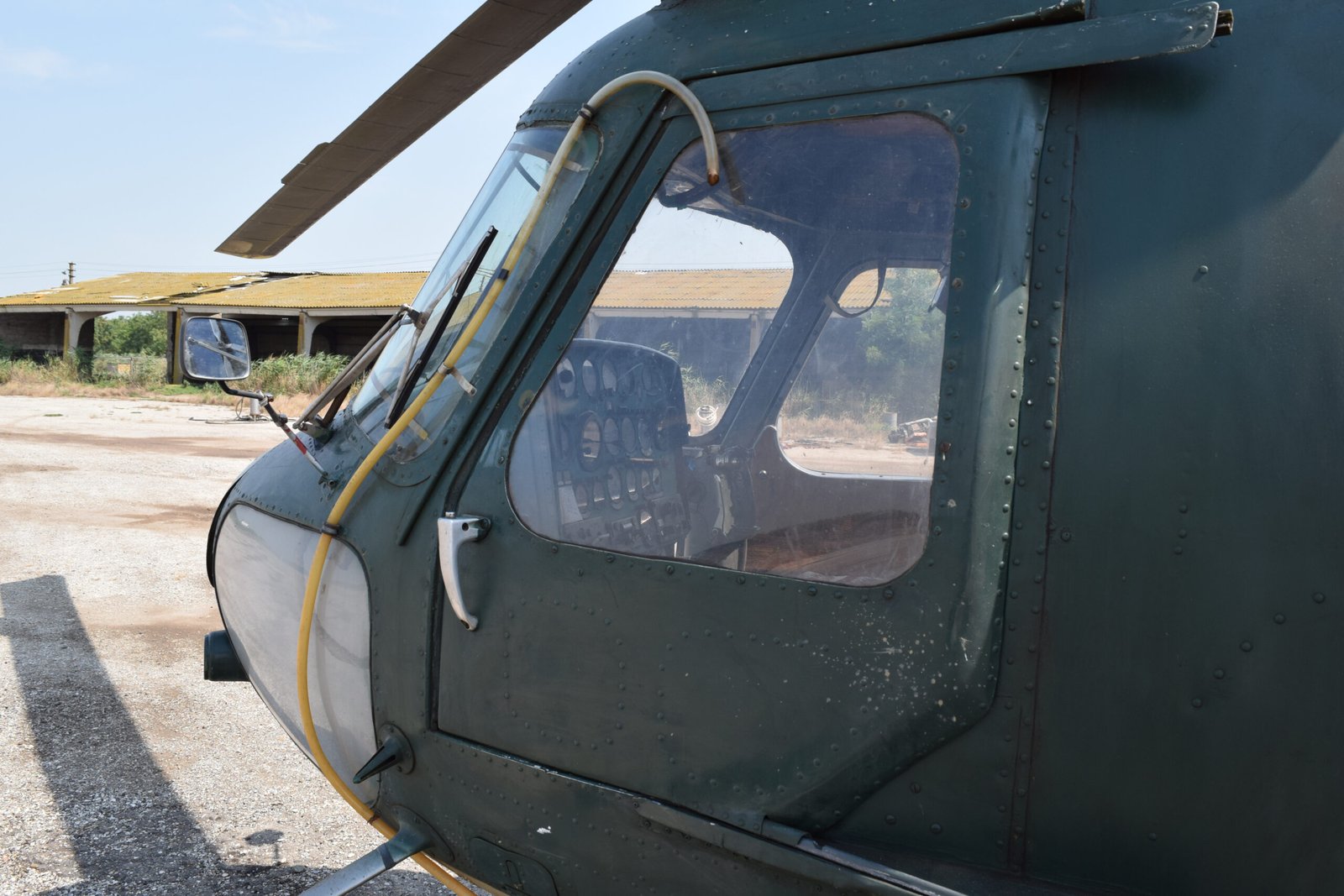flight paths
Flight Paths: How Aviation Is Shaping a Sustainable Future
As we soar into the future, aviation stands at the crossroads of innovation and sustainability. With a growing emphasis on eco-friendly practices and technology, aspiring aviators can find numerous educational pathways to prepare them for this dynamic industry. Whether you’re interested in becoming a pilot, aircraft mechanic, or air traffic controller, there are various aviation schools that cater to different aspirations.
*Types of Courses Offered in Aviation Schools**
Aviation education is incredibly diverse. At its core, you’ll find programs ranging from traditional flight training to specialized courses:
1. **Pilot Training Programs**: These are designed for those who dream of flying commercial or private planes. From private pilot licenses (PPLs) to airline transport pilot licenses (ATPLs), students learn everything from basic navigation to advanced flight maneuvers.

2. **Aircraft Maintenance and Engineering**: For those fascinated by the mechanics behind flight, these programs teach skills essential for maintaining and repairing aircraft. Students delve into subjects such as aerodynamics, propulsion systems, and aviation regulations.
3. **Aviation Management**: This track focuses on the business side of aviation—ideal for future managers or administrators in airlines or airports. Coursework typically includes operations management, financial analysis, and strategic planning.
4. **Air Traffic Control Training**: Air traffic controllers play a crucial role in ensuring safe takeoffs and landings. Specialized training prepares students for managing airspace effectively while maintaining safety protocols.
5. **Unmanned Aerial Systems (UAS)**: With drones becoming an integral part of both commercial and recreational flying, many schools now offer courses focused on drone piloting and applications.
The variety of options ensures that there’s something for everyone with an interest in aviation!
*Top Aviation Blogs & Websites**
In today’s digital age, staying informed about the latest trends in aviation is easier than ever! Here’s a list of some must-follow blogs and websites:
**Airways Magazine**: Offers news articles covering current events in airlines and airport operations.
**Flying Magazine**: A great resource filled with tips on flying techniques, aircraft reviews, and personal stories from pilots.
**AeroNews Network**: Provides updates on everything from legal changes affecting aviation to new technological advancements.
**FlightAware Blog**: Focuses on global flight tracking—perfect for enthusiasts wanting real-time information.
Social media platforms also serve as invaluable resources:
Join Facebook groups like “General Aviation Pilots” or “Aviation Enthusiasts” where members share experiences and advice.
On Instagram, follow accounts like @aviationdaily that showcase stunning aerial photography alongside industry news.
Twitter handles such as @AvGeekNation often tweet breaking news related to flights around the world.
These platforms foster communities that expand your knowledge while connecting you with fellow aviators!
*FAA Flight Schools & Simulators**
For anyone serious about pursuing a career in aviation within the United States, enrolling in FAA-certified flight schools is essential. These institutions ensure compliance with federal regulations while providing high-quality training environments.
Many schools offer state-of-the-art simulators allowing students to practice in realistic settings before stepping foot into an actual cockpit—an essential tool that enhances safety measures during initial training stages.
Whether you’re looking at local options or renowned institutions like Embry-Riddle Aeronautical University or Purdue University’s School of Aviation Technology—the world is brimming with opportunities tailored specifically for you!
The future of aviation leans towards sustainability—not just through cleaner technologies but through education as well! With various courses available across numerous platforms dedicated to sharing knowledge about this exhilarating field—it’s time to buckle up for an exciting journey ahead!
Flight Paths: Exploring the Impact of Aviation on Global Connectivity
Aviation serves as the backbone of global connectivity, bridging vast distances and cultures in a matter of hours. As air travel continues to evolve, so too does the need for skilled professionals equipped with the knowledge and expertise to navigate this dynamic industry. In this post, we will explore various avenues for education within aviation, highlight some engaging resources for enthusiasts and professionals alike, and touch upon FAA-approved flight schools.
*Types of Aviation Courses**
When it comes to pursuing a career in aviation, numerous educational pathways exist. These courses can cater to diverse interests—ranging from piloting to aerospace engineering. Here are some common types:
1. **Pilot Training Programs**: These courses focus on preparing aspiring pilots with essential flying skills. They typically start with private pilot licenses (PPL) and progress through instrument ratings (IR), commercial pilot licenses (CPL), and even airline transport pilot licenses (ATPL).
2. **Air Traffic Control Training**: For those fascinated by managing air traffic, specialized programs teach students how to coordinate aircraft movements safely and efficiently.
3. **Aviation Management Degrees**: Combining business acumen with aviation principles, these programs prepare students for managerial roles within airlines or airports.
4. **Aircraft Maintenance Courses**: These technical programs train individuals in the maintenance and repair of aircraft systems, ensuring safety and compliance with regulations.
5. **Flight Dispatch Training**: This course prepares students to plan flight routes, manage fuel loads, and ensure that all regulatory requirements are met before a plane takes off.
The variety within aviation education reflects its multifaceted nature—offering something for everyone interested in joining this exhilarating field.
*Engaging Aviation Resources**
For anyone passionate about aviation or looking to keep abreast of industry trends, numerous blogs, websites, and social media platforms serve as excellent resources:
**Blogs/Websites**:
– *AirlineReporter.com*: A blog dedicated to news about airlines combined with personal experiences.
– *The Points Guy*: Focused on maximizing travel rewards through points accumulation.
– *FlyingMag.com*: Offers expert insights into flying techniques alongside aircraft reviews.
**Social Media Sites**:
– Follow hashtags like #AvGeek on Twitter or Instagram for stunning aerial photography and community discussions.
– Join Facebook groups such as “Pilots Without Borders” which connects aviators across the globe for humanitarian missions.
These platforms not only provide valuable information but also foster a sense of community among aviation enthusiasts.
*FAA Approved Flight Schools**
If you’re considering taking your first steps towards becoming a pilot or advancing your skills further, FAA-certified flight schools are essential destinations. They comply with strict federal standards ensuring quality training:
1. **Local Flight Schools**: Many regional airports host small flight schools that offer personalized training sessions tailored to individual needs.
2. **University Programs**: Several universities now feature robust aviation programs offering degrees along with practical flight experience at affiliated airports.
3. **Simulator Centers**: Advanced simulators provide an immersive learning experience without leaving solid ground! They allow pilots-in-training to practice emergency procedures or familiarize themselves with complex aircraft systems before actual flights.


In closing, the influence of aviation on global connectivity is profound—and it all begins with education! With various courses available catering to different interests within the field, countless online resources enriching our understanding of aviation trends—including FAA-approved institutions paving the way for future pilots—the sky truly is not just the limit; it’s merely another starting point!
Flight Paths: Explore the Most Breathtaking Airports Around the World
When it comes to aviation, there’s more than just soaring through the skies and landing safely; it’s about the journey that begins long before takeoff. Aspiring pilots and aviation enthusiasts often find themselves navigating a maze of educational options, online resources, and flight schools. This post will guide you through diverse aviation schools, essential online platforms, and insights into FAA-approved flight training.
*Aviation Schools by Types of Courses**
The world of aviation education is rich and varied, catering to different interests and career aspirations. Here’s a brief overview of common course types:
1. **Pilot Training Programs**: These are designed for those who dream of taking control of an aircraft. From private pilot licenses (PPL) to commercial pilot licenses (CPL), these programs cover everything from basic navigation skills to advanced aerodynamics.

2. **Aircraft Maintenance Engineering**: For those inclined towards the technical side, this program focuses on maintaining and repairing aircraft systems. Understanding mechanical engineering principles ensures that planes remain safe for travel.
3. **Aviation Management**: This course is ideal for individuals looking to dive into airport operations or airline management. It covers operational procedures, regulatory requirements, and business strategies in the aviation sector.
4. **Air Traffic Control Training**: A vital component of airspace safety, air traffic control training teaches students how to manage aircraft movements efficiently while ensuring safety protocols are followed.
5. **Flight Dispatch Programs**: This field involves planning flight routes, fuel loads, and weather considerations. Dispatchers play a crucial role in ensuring smooth operations behind the scenes.
Each type offers unique insights into different facets of aviation, allowing students to tailor their education according to their passions.
*Lists of Aviation Blogs, Websites, Social Media Sites**
In today’s digital age, staying updated with aviation trends is easier than ever with numerous blogs and websites dedicated to this field:
**Airliners.net**: A go-to site for plane spotters featuring thousands of photos from around the globe.
**Flying Magazine Blog**: Offers articles on flying techniques as well as product reviews.
**Jetwhine.com**: A blog focusing on industry developments along with thought-provoking commentary.
**Aviation Week Network**: Provides news articles focused on aerospace technology advancements.
Social media also plays a pivotal role in connecting aviators worldwide:
Follow hashtags like #AvGeek on Twitter or Instagram for stunning aerial imagery shared by fellow enthusiasts.
Facebook groups such as “Pilots’ Lounge” or “General Aviation” foster community discussions ranging from flying tips to industry news.
*FAA Flight Schools / Airplane Schools / Simulators**
Choosing an FAA-approved flight school is paramount for receiving quality training recognized across the United States—and beyond! Look for institutions that offer both ground school instruction alongside practical flight experiences using advanced simulators.
Simulators provide an invaluable tool for budding pilots—they allow trainees to practice maneuvers without leaving the ground while experiencing real-life scenarios in a controlled environment. Notable FAA-certified institutions include:
**Embry-Riddle Aeronautical University**
**Purdue University**
**California State University – Los Angeles**
These schools not only equip students with hands-on experience but also connect them with industry professionals through internships and networking events.
In conclusion, whether your heart races at the thought of piloting an aircraft or managing daily airport operations from afar, there’s no shortage of avenues within aviation waiting to be explored. Embrace your passion by diving deep into education resources—your flight path awaits!

Flight Paths: How Aviation is Shaping Global Connectivity
In an era where the world feels smaller than ever, aviation plays a pivotal role in knitting together distant regions, cultures, and economies. The advancements in technology not only enhance safety and efficiency but also shape the future of global connectivity. As we soar through the skies, let’s explore how aviation technology training, online resources, and emerging trends like drones are revolutionizing this industry.

Aviation technology has come a long way since the days of wooden biplanes. Today’s pilots rely heavily on sophisticated simulators that replicate various flying conditions and scenarios. These state-of-the-art training tools allow aspiring aviators to hone their skills without leaving the ground. Simulators provide a risk-free environment for learning, enabling pilots to navigate thunderstorms or emergency situations while receiving real-time feedback from instructors. This shift towards virtual training is not just cost-effective; it enhances safety by ensuring that pilots are well-prepared before they take to the skies.
For those looking to delve deeper into aviation beyond traditional flight schools, a plethora of online courses and ground schools are available at your fingertips. Platforms such as Coursera and Udemy offer specialized courses covering everything from aerodynamics to air traffic control principles. The flexibility of these programs allows individuals to learn at their own pace while balancing other commitments—perfect for those aspiring to become certified pilots or aviation professionals.
In addition to formal education, staying informed about industry trends is crucial for anyone passionate about aviation. A wealth of blogs and websites can serve as invaluable resources for insights into current events, technological advancements, and career advice within the field. Some notable mentions include:
1. **AirlineGeeks.com** – Provides up-to-date news on airlines around the globe.
2. **ThePointsGuy.com** – Focuses on travel tips and maximizing loyalty points.
3. **FlyingMagazine.com** – Offers expert reviews on aircraft along with pilot stories.
4. **PPRune.org** – A popular forum among pilots where they share experiences and advice.
5. **AviationWeek.com** – Delivers in-depth analysis of aerospace developments.
Social media platforms also play a significant role in connecting aviation enthusiasts worldwide. Twitter accounts like @AeroNewsNet keep followers updated on breaking news, while Instagram profiles such as @PilotLife showcase stunning aerial photography alongside glimpses into a pilot’s daily life.

As we explore further into modern aviation landscapes, drones are proving transformative—opening new avenues for connectivity and commerce while raising questions about regulations and airspace management. Drones have found applications beyond mere recreational use; industries such as delivery services, agriculture, surveillance, and even emergency response have started integrating unmanned aerial vehicles (UAVs) into their operations.
For those intrigued by this burgeoning sector or considering a career in piloting drones commercially, it’s essential to understand FAA regulations governing drone usage. The Federal Aviation Administration provides comprehensive resources online that cover licensing requirements for remote pilots (Part 107 certification), safety guidelines for drone operation, and tips for navigating airspace restrictions.
So whether you’re an aspiring pilot eager for knowledge or simply a curious traveler keen to understand more about our interconnected world through aviation—there’s never been a better time to get involved in this dynamic field! With technology advancing rapidly alongside educational opportunities expanding infinitely—aeronautical dreams can be transformed into reality faster than ever before! Embrace your passion today; who knows where your flight path may lead?
Flight Paths: Exploring the Future of Sustainable Air Travel
As we soar into a future where sustainability takes precedence, the aviation industry is undergoing a radical transformation. From green technologies to innovative training methods, this evolution encompasses all facets of air travel. Let’s navigate through these exciting developments!
*Online Aviation Courses and Ground Schools**
In an age where digital education reigns supreme, aspiring pilots can now access a plethora of online aviation courses. These programs offer flexibility and convenience, allowing students to learn at their own pace. Renowned platforms like Coursera and Udemy have partnered with universities to provide comprehensive training that covers everything from aerodynamics to navigation systems.
Ground schools remain a crucial foundation for pilot training, offering hands-on experience in real-world scenarios. They blend theoretical knowledge with practical skills necessary for successfully navigating the skies. With advancements in technology, many ground schools are also integrating virtual reality (VR) elements into their curricula, providing immersive experiences that simulate flight conditions.
*Career Opportunities for Pilots**
The demand for skilled pilots has never been greater. Airlines are constantly seeking qualified individuals who can adapt to the rapidly evolving landscape of aviation. Job opportunities abound not only in commercial airlines but also in cargo transport, private charters, and even agricultural aviation. As sustainability becomes a key focus, positions related to eco-friendly practices within flight operations are on the rise.
Additionally, many organizations are collaborating with educational institutions to create mentorship programs designed to guide new pilots through their careers. This support system helps bridge the gap between learning and employment while fostering a culture of sustainability in air travel.
*The Rise of Drones**
Drones are revolutionizing various sectors beyond traditional piloting roles. Their applications range from delivering packages to monitoring environmental changes—an essential tool for promoting sustainable practices within industries such as agriculture and logistics. The Federal Aviation Administration (FAA) has introduced regulations that facilitate drone integration into our airspace while ensuring safety standards are met.

With more companies investing in drone technology, there will be an increasing need for professionals trained in this area. Online courses focusing specifically on drone operation and regulations are sprouting up everywhere, enabling enthusiasts and career-changers alike to gain valuable skills.
*Aviation Resources: Blogs, Websites & Social Media**
For those eager to stay ahead in the dynamic world of aviation, numerous blogs and websites provide invaluable insights:
1. **AirlineGeeks.com** – A hub for news and analysis from around the globe.
2. **FlyingMag.com** – A favorite among general aviation enthusiasts.
3. **AVweb.com** – Offers breaking news articles focused on flight safety.
4. **PilotWorkshops.com** – Provides unique skill-building resources tailored for pilots.
Social media platforms such as LinkedIn host groups dedicated to aviation discussions while Instagram accounts highlight stunning aerial photography from passionate aviators worldwide.
*Aviation Technology Training: Simulators**
One cannot overlook the impact of simulators on pilot training programs! Modern flight simulators replicate realistic flying environments without leaving solid ground behind—a cost-effective way to hone skills without risk or resource consumption associated with real flights.
These advanced systems allow trainees to practice emergency maneuvers or complicated navigation scenarios repetitively until mastery is achieved—essentially streamlining training processes while promoting safer flying practices overall.
As we look toward tomorrow’s horizon in aviation innovation—where sustainable solutions become commonplace—the journey promises excitement aplenty! Whether you’re considering becoming a pilot or simply intrigued by aerial advancements, staying informed is your ticket toward navigating this transformative era successfully!




